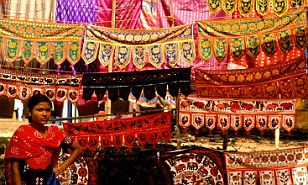EXCLUSIVEMy ride on the incredible Australian train that snakes through lush rainforest to a station where PYTHONS slither along the platform... here's my footage
- MailOnline Travel's Tom Chesshyre boards the Kuranda Scenic Railway
- The 23-mile route runs through the Barron Gorge National Park, Queensland
- READ MORE: Meet the people who make Changi Airport one of the world's best
When the first sod was turned for the 23-mile (37km) railway from Cairns to Kuranda on 10 May, 1886, designed to link the sleepy coastal settlement Queensland’s far north with the rugged interior, wild parties involving roasted bullocks and vast quantities of beer continued well into the night.
They knew back then it was a huge moment: laying the tracks would require hundreds of workers, hostelries to cater for their (often thirsty) needs, plus hotels and support businesses aplenty.
The line would also provide key transportation for tin and gold miners, plus open up fertile grazing land beyond dreaded mountains.
In one fell swoop Cairns - much to the dismay of nearby Port Douglas, which had also been vying for the railway - was firmly on the map, its future rosy. The trains were coming!
Little could they have imagined that 140 years on carriages full of tourists – some in ‘Gold Class’ sipping fine wines and nibbling cheese – would travel along the twisty line into the perilous rainforest for pleasure. Back in the 1880s, after all, the interior was a place of malaria, dysentery and dire conditions.
It’s believed a total of 32 navvies (construction workers mainly from Ireland and Italy) sadly died during the line’s construction, which eventually opened in 1891.
These days, you board at Cairns station, tucked away by a multistorey car park and a massive shopping mall, a ten-minute walk from the ocean-side Esplanade of lively seafood restaurants and bars.
It’s a somewhat gloomy spot, removed from the city’s tourism glamour. Yet it’s lightened up by something very special indeed: the brightly painted locos of the Kuranda Scenic Railway, which offers rides in delightfully old rickety carriages - some over 90 years old with original oak panels.

MailOnline Travel's Tom Chesshyre boards the Kuranda Scenic Railway (above)

The 23-mile route runs through the Barron Gorge National Park, Queensland

Tom is pictured above in a Gold Class carriage, which features 'fancy' green-and-gold armchairs
My train has ten carriages – there can be up to 15 (capable of accommodating 500 passengers) – hauled by two 1720 class diesel-electric locomotives built in 1966, each with 1,000 horsepower engines.
Trainspotter-y facts, perhaps, but this power is important: the line, on narrow gauge tracks (3ft 6in), rises dramatically from sea level to 328 metres (1,076ft) in altitude (crossing 55 bridges and entering 15 tunnels). The oomph is vital.
After admiring the locos, which are painted with pictures of Buda-Dji, the ‘carpet snake’ of Indigenous Australian ‘dreamtime’ stories, I enter my carriage and off it rattles.
The joy of the ride comes from juddering out of the city centre, with its gritty auto-parts yards and warehouses followed by smart suburban houses with solar panels and pools, into the deep, uncompromising rainforest of palm fronds and towering eucalyptus and fig trees dangling creepers.
Colourful butterflies flicker here and there. Tropical birds twitter. You are officially in the Wet Tropics of the Queensland World Heritage Site - more specifically, the Barron Gorge National Park, through which the river Barron flows, taking the path Buda-Dji is said to have established many millennia before settlers arrived Down Under in the 1770s.
The change in scenery happens quite suddenly, almost before you’ve had a chance to take in your surroundings.
I was in Carriage Ten, standard class (called Heritage Class), dating from 1944 and with an interior bedecked with burgundy leather bench seats, old black-and-white pictures of the brave 19th-century navvies, lovely oak panels, and open windows with metal bars. The latter provided a nice cool breeze. No need for a/c.

The train pauses at Barron Falls, 'a magnificent waterfall tumbling 265 metres (869ft) over great boulders to the valley floor'

Kuranda railway station features over 200 plants - and pythons are sometimes seen slithering over the platform, Tom learns
The only other ‘luxury’ comprises a simple watercooler in a corner (there is no dining carriage). In Gold Class (on selected services) you do, however, get fancy green-and-gold armchairs plus beer, wine, soft drinks, cheese platters, sorbets and souvenir postcards and pens.
This is £28 extra each way, I’m reliably informed by Aiko, one of the cheerful guards. The Heritage Class one-way fare is £29.
Deeper and deeper the train twists into the jungle – tree kangaroos, possums, flying foxes and strange Cassowary birds lurking somewhere within. A running commentary tells you all the basics, about the trials and tribulations of the 1880s workers.
Some of those struck down are said to have been buried beneath the tracks on which we’re riding. Meanwhile, back in those early days, tumbledown encampments with rough and ready bars had grown up along the line.
There are several highlights of this frankly glorious ride. After a 180-degree early turn called the Jungarra Loop, the carriages clatter onwards to the 80-metre-long Stoney Creek Bridge. And here, on my trip, we are being tracked by a tourist helicopter – which hovers dramatically above a gorge.
Further on, the train makes a stop at Barron Falls, a magnificent waterfall tumbling 265 metres (869ft) over great boulders to the valley floor. What a spectacular view.

Tom meets Kuranda stationmaster Paul Courtney, who reveals that a five-metre python was once spotted on the platform. But he adds reassuringly: 'They don’t like humans'

Stationmaster Paul in the Kuranda station greenhouse. 'How many stations have one of those?' remarks Tom

Tom is pictured here in Kuranda station's old-fashioned signal box
The final treat is pulling into Kuranda station – perhaps the world’s greenest, quite literally. More than 200 plants (many in hanging baskets) grow on its long, curling platform. I know this as I’m told all about it by the genial and very tall duty-stationmaster Paul Courtney, who points out ‘elephant ear’ plants with huge leaves and ‘painter’s palette’ plants with bright red blooms.
After being shown the platform’s greenhouse (how many stations have one of those?) and the old-fashioned signal box, I ask about snakes. The rainforest looks like prime snake territory.
‘Oh yeah, generally it’s just pythons,’ says Paul casually. ‘One time we had one that was five metres. Usually, we just wait for them to slide away. They don’t like humans. But if they don’t go away and there are passengers around, we’ll get ‘em moved.’
More worrying are taipan snakes. ‘They’re one of the deadliest snakes in the world,’ says Paul, nonchalantly again. But apparently, they’re quite rare.
At the end of this fantastic ride – one of the best anywhere of this distance – you have the laid-back little town of Kuranda to explore with its charming restaurants, bars, art galleries (some featuring top-class Indigenous Australian works) and cheap and cheerful souvenir stores.
All that’s left is to return to sea level, which I do via the terrific Skyrail cable car, soaring above the rainforest canopy. You can alternatively, of course, also take the train back down.
Any lover of railways visiting Australia should make a beeline for Kuranda’s 1h 55m ride, as tourists have been now since 1936, when the first holidaymaker services began.
One of the country’s greatest railway stories – and finest journeys – awaits.
• Tom Chesshyre is author of Slow Trains to Istanbul… And Back: A 4,570-Mile Adventure on 55 Rides, published by Summersdale.




















































































































